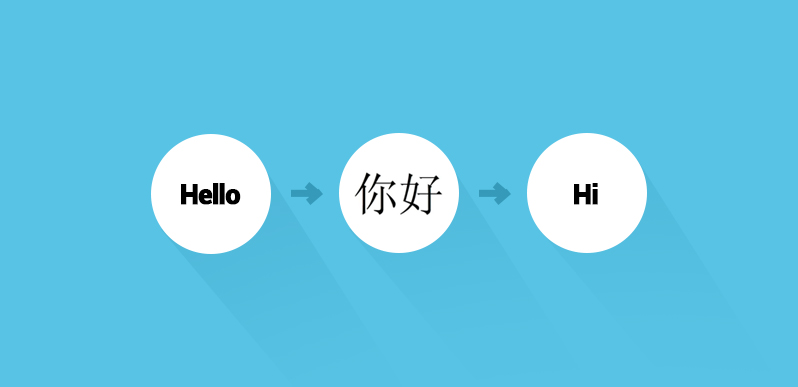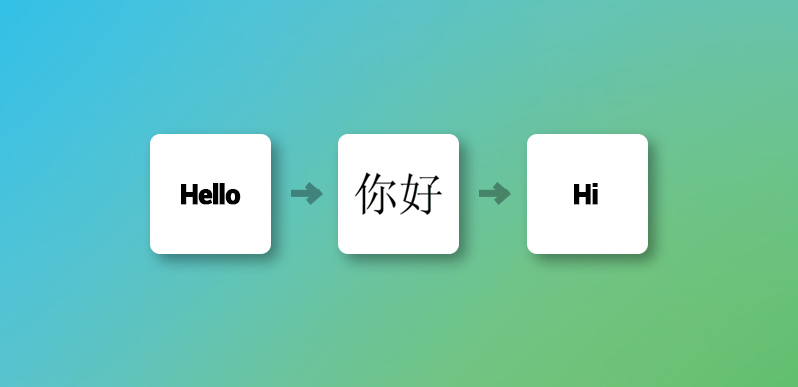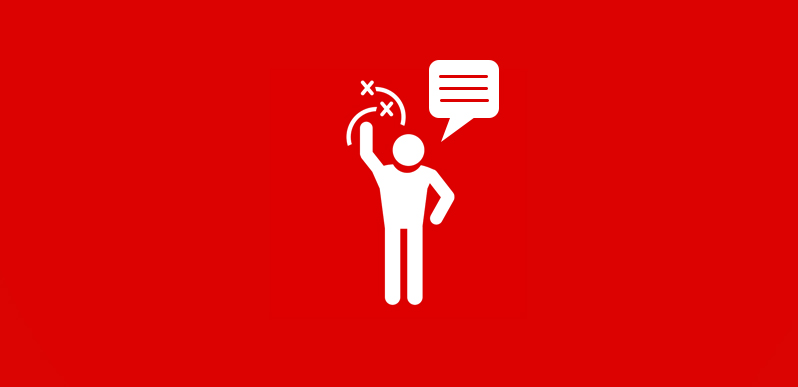Back Translation – The Complete Guide with Real-Life Examples
When we talk about translation, we refer basically to forward translation – the transfer of a written text from one language (source language) to another (target language); it is an attempt to convey the message that was written in one language into another without changing the original meaning and intention.
Translation takes into account the subtle nuances of the language, equivalent terminology, jargon, idioms, colloquialisms, as well as the culture of the target language. Often, subject matter experts are also involved, especially if it is translation of technical (Medical), or translation of legal documents. The experts check to ensure that the translated text is accurate for the industry that it is meant.
Before the translated documents are submitted to the client, they are scrutinized and reviewed exhaustively; proofreaders check for linguistic and grammatical errors, SMEs may once more check to see if any technical errors are present, and so on.
Whatever errors are identified and rectified and only then is the document sent to the client. However there are some instances where there is a greater need for accuracy, and it has to be rechecked; in such cases, a back translation may be performed.
Here you can see the different types of translations and which one applies to each case.


Table of Contents
1. Back Translation Definition
To put it very simply, Back Translation is the process of translating an already translated document back to the original source language. That is, if a document was translated from English to Chinese, it is translated back into English from Chinese.
Usually, these tasks are given to translators who were not involved in the initial translating process. This means the don’t know the specific context of the original document or its objectives. The translator performing the back translation is also normally required to be as literal as possible – only then can a precise description of the translated words be obtained.
Of course, the document that has been translated back cannot be expected to match 100% with the original source document. After all, one can use several different words to mean the same thing, so you must expect some differences.
What is important here is that the meaning conveyed is 100% same. Think of it like checking your answers in your Math test: to check subtraction accuracy, don’t we add the answer to the amount that was subtracted? So basically, it provides extra checks for your process, and a nuanced assessment of the translated document.

2. Back Translation vs Parallel Translation
This process needs to be distinguished from parallel translation. This type of translation is done by placing the translated text parallel to the original or source text. This enables an instant and continuous comparison, and easy checking of the accuracy of the translated work. The two methods are different, though both help in checking accuracy and veracity of the translated document.
After the translation is complete, the document is checked with the original text. A comparison is made to see how much of the original text is maintained. This process helps in evaluating the compatibility of the meaning conveyed by the text between the two languages.
Also Read: What is Notarized Translation?
3. When is it Important?
Back translations are usually requested when the documents contain highly sensitive or secretive information – high risk documents, and documents where every little detail matters; sometimes, they are mandated legally. The best examples of this would be ethics committees and Institutional Review Boards (IRBs); they require back translating as well as accuracy certificates for materials related to clinical trials and pharmaceutical marketing that have been translated.
An simple mistake could lead to very serious repercussions in the medical field, and can turn into a nightmare of epic proportions. Several human lives could be put at stake. It is crucial that correct information is delivered to patients and health care practitioners regarding medicines. Also about their dosages, side-effects, contra-indications, and so on.
4. Back Translation Examples
Let’s review some Real-life examples where Back Translation has a vital importance:
4.1. Back Translation on Medical Device Translation
In the case of medical devices like say glucometers, blood pressure monitors, pacemakers, (for patients), Doppler or ultrasound machines, MRI machines and so on (for healthcare practitioners and technicians) also, it is extremely important that the precise instructions are made available to the users.
Patients and healthcare workers need to be protected from erroneous information and the potential ramifications that could arise from such wrong translation.
It is also critical to have a perfectly translated documents for things like patient consent forms. These are usually required for performing surgeries and other medical procedures.
Medical translation are one type of specialized translation.
This kind of translation greatly helps in the scientific field, as accurate translation of ingredients, lab notes, research notes, scientific data, interpretations and results are a must. Without perfect transcription, the results could be wrongly interpreted or recorded, and lead to any number of negative situations.
Patent Document Translation Service
Want to translate patent litigation documents for your invented product? Our expert translators ensure highest level of patent translation quality with their legal knowledge and technical expertise. Trust us to get the best patent translation online.
Translate Now4.2. Back Translation in Global Market Research Translation
Another area where this type of translation is required is in global market research – surveys, questionnaires, and so on. Obviously, if there are any inconsistencies, ambiguities or misinterpretations in the translation, the responses to the questions won’t be accurate, and as a result, the final results may not at all reflect the actual situation!
Marketing departments rely on customer opinion to formulate strategies and prepare campaigns, and sometimes, even decide on which products to retain or stop. Without the correct back translation, surveys and campaigns may fail miserably, and companies may not be able to deliver value to their customers.
Ergo, there is a pressing need to ensure complete accuracy in the translation of surveys and questionnaires; only an expert professional who stays true to the task can provide the perfect translation regardless of culture differences that will help organizations achieve their marketing goals.
Business License Translation Service
You have a Local Business and want to expand to a foreign country? Then you need a Business Document Translation. Trust us to get your Business License translated to more than 65 languages, we translate business documents online in less than 24 hours and every translation is certified.
Translate Now4.3. Back Translation in Technical Manual Translation
Back translations may also be required in the case of technical manuals, where even a slight mistake can lead to a potential catastrophe. The more sensitive the equipment or the more hazardous the materials referred to in the manual, the higher the need for absolute accuracy of the translated work. Erroneous translations may lead to wrong assembly of equipment (best case scenario). Or fatal accidents involving loss of property and life (worst case scenario).
Product Manual Translation Service
Are you planning to launch your new products in the foreign market? Don’t forget to translate the product manual as well. We provide you with product manual translations and user manual translations at a very cheap price.
Translate Now4.4. Back Translation in Legal Document Translation
Legal Documents Translation can also greatly benefit from back translation; you have to have the exact translation – there are no two ways about it. It is crucial that Legal Documents when translated contain no error. Otherwise you could be opening the doors to another lawsuit, or even be in contempt of court.
Multilingual contracts can create several big translation problems if the translation is not top notch. Miscommunication can arise, and confusion will reign if the translated text is not accurate or contains ambiguities. By simply performing a back translation, one can avoid misunderstanding, and even reprinting of materials – saving both cost and time.
Also Read: Tips for translating legal documents
5. What is Back Translation useful for?
A Back translation can help to pinpoint vague sentences or phrases. Can detect omission of important or sensitive details, misinterpretations or misunderstandings of important details, and so on. It also serves to act as a double check for ensuring cultural appropriateness and conceptual correctness for the target market before the translated material goes to press.
We may not realize it but incorrect or inappropriate translation can create problems because of cultural differences. This takes this sensitivity into consideration and works to defuse any potential misunderstandings and backlash. Back translation serves to ensure the utmost quality and accuracy of a translated text. Obviously, the whole process takes a lot more time. But if maximum accuracy is paramount and time is not as much of essence, back translating provides great results.
Also Read: Common translation mistakes
6. What to expect from a Back Translation?
A document that is translated back is never going to be an exact match of the original source document. Though a translator strives to be objective, there is no doubt that translation is an art, and not a science; therefore, art is often subjective. The personal style of the translator is bound to come into play.
There is no set formula for any language – word choices may differ from professional to professional. Translators are instructed to perform as literal and direct a back translation as possible to ensure the right dictionary meaning of the translation. However, languages are complex and multi-faceted, and one cannot hope to get back the exact original text.

One should also keep in mind that back translation is more a tool for identifying potential problems. It does not guarantee 100% accuracy.
Also Read: Machine Translation vs Human Translation
7. How to submit a Back Translation to the client?
After completing the translating job and checking with the source text to identify the errors or differences, the requisite changes are made. A thorough check is made to ensure that there are no confusions or misunderstandings, and all problem areas have been resolved.
The translated document is then submitted to the client along with the notes if any from the translator, so that they can review them. If they find any potential problems, they usually flag them and record them, and the original translator is notified.
The translator, after reviewing the report, can defend their translation if they feel it is accurate, or make necessary changes. The document is resubmitted to the client who takes the final decision on whether to include the translator’s recommendations or change it as per their wish.
Conclusion
It may cost a little more and take more time, than a simple transalation; however, both translators or agencies, and the customers need to look at back translation as an investment in quality, rather than an unnecessary expense.
Back translating is rapidly gaining more importance as more and more businesses go global. Accuracy of translated documents and materials is the key to tapping into new markets and adhering to local regulations.

TranslateDay provides Certified Translation Services for all kinds documents including Birth Certificate Translation, Passport Translation, Marriage Certificate Translation, etc. Translate Day employes the most experienced translators to bring clients a thorough translate with a touch of expertise.
-
$23.00/page
- Simple Certified Translation Price per Page. No Hidden Fees. A page is defined as: 250 words or fewer (including numbers), one-sided, and letter-size (8.5″ x 11″) or A4 dimensions or smaller.








2 Comments. Leave new
Hi this is Ben
Thanks for the blog. This blog contains so many pieces of information and this will help for my business. Thank you for posting and guide us with your knowledge.
Key concepts on back translation here this is awesome thank you